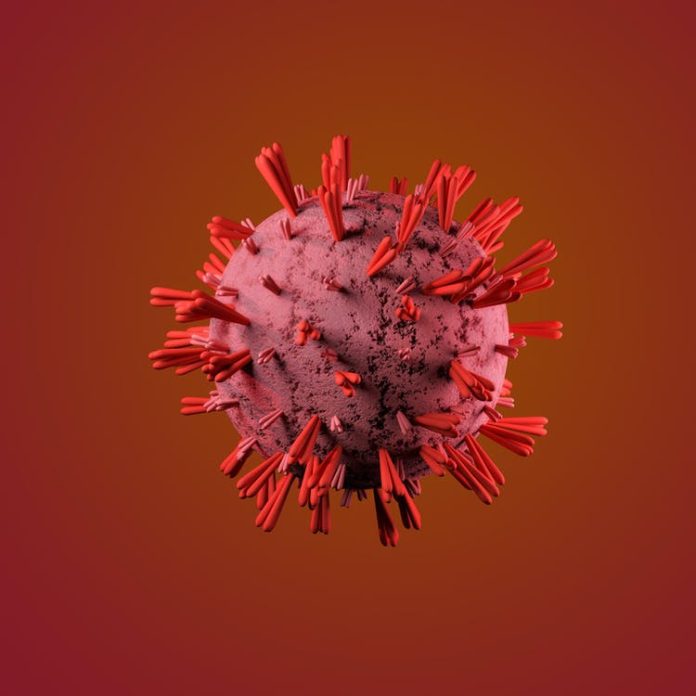DNA is the hereditary material in humans and almost all other organisms. Most DNA dwells in the cell nucleus (called nuclear DNA), but a slight volume of DNA can be there in the mitochondria (called mitochondrial mtDNA or DNA). DNA features two long chains of nucleotides twisted around each other to form a double helix. The structure of the double helix is similar to that of a twisted ladder. The rungs of the ladder contain pairs of nucleotides, and each type of nucleotide base (Adenine, Thymine, Cytosine, and Guanine) is only compatible with its complementary base (Thymine pairs with Adenine, Cytosine pairs with Guanine). The complementary base pairing is where DNA stores genetic information.
Researchers continue to study every aspect of the human body and others to understand the cause of diseases and their impact on health. Likewise, there is still much unknown about the novel coronavirus (COVID-19), but scientists are learning more daily. One area of research is looking at DNA. For knowledge, MyBioSource informs that human DNA tends to be 6 feet in size covering more than 46 chromosomes. Anyway, scientists believe that understanding the behavior of DNA could help in the development of better treatments. Also, studying the DNA could help them understand how the virus works and how it can infect humans.
Can DNA reveal the severity of infection in an individual?
According to the Mayo Clinic research team, they know the reasons for the severity or mildness of COVID-19 infection in people. If their research has any merit, the experts believe that it will give a new definition to the behavior of the SARS-CoV-2 virus because their discovery seems to be different from what the early days of the pandemic held. The Rochester scientists have detected two proteins that mutate while interacting with the virus, potentially impacting a person’s health in a certain way. The team collected DNA sequence reports from different countries to study the differences that led to the disease. As per their observations, proteins can be a crucial player.
Dr. Richard Weinshilboum believes that it’s a novel approach and method concerning COVID-19 that anyone has taken. Most people may not know much about human proteins and their functions in the body. According to the National Institutes of Health (NIH), proteins are oversized and intricate molecules that remain active in the cells, ensuring our organs and tissues function properly. And these proteins depend on DNA to come to life. Hence, you can say that genetic factors determine the nature of their proteins. For a better understanding, the health leaders use the example of the role of proteins in cancer response or treatment.
Nevertheless, cancer and coronavirus diseases are starkly different. The new study explains why some people died of COVID while others didn’t get any symptoms. Two genes, ACE2 and TMPRESS2, have been identified as playing a role in increasing or decreasing a person’s susceptibility to COVID-19. If these genes express more protein, it might make someone more likely to get the virus or have severe symptoms. However, if they express less protein, it might protect against the virus. In other words, ACE2 and TMPRESS2 can cause the virus to enter human cells and contaminate them.
Although it is an exciting development and may change the face of coronavirus treatment, people are now more worried about BA.5 variant surge. Some people fear reinfection. Let’s delve into this aspect once.
The likelihood of catching reinfection
Several factors can be responsible for causing COVID-19 reinfections. These include the rise of new variants, waning of immunity developed from previous coronavirus infection or vaccination, and avoidance of standard precautionary measures like social distancing and mask-wearing. CDC says everyone is still trying to find more about this disease, including COVID-19 reinfections and when someone can get it. As per the historical data, reinfections were not a cause of concern before the Omicron variant. The experts studied the cases of reinfection from the pandemic’s beginning until the emergence of Omicron. Their observations show that the risk of infection accounted for 6.7% in 18-22 months. Today, the scenario is drastically different because of Omicron variants.
Before the dawn of Omicron, reinfections were not an issue as the people enjoyed more protection. A study of the PCR test report of 2020 indicates that an infected person had almost six months of immunity developed from the first infection. However, a 2022 study revealed that vaccinated people seemed to have protection from prior infection for about two years while unvaccinated people’s immunity diminished in one year. If you look at reinfection caused by Omicron, the protection from the pre-Omicron variant can be less than 38.1%.
Both BA.4 and BA.5 subvariants are causing a fresh wave of COVID-19 in the United States as they can easily evade immunity. Going by this, the risk of reinfection is there. But you don’t have to worry because you likely have protection from the previous infection and vaccine.








